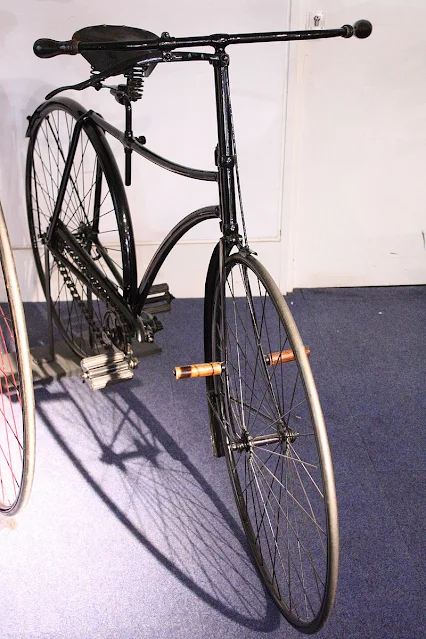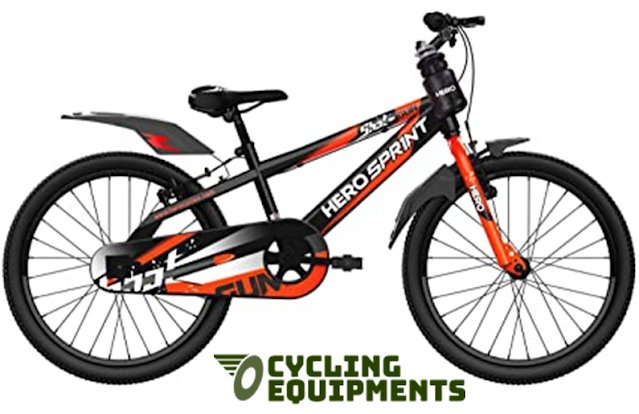Everything You Need to Know About Bicycle
History of Bicycle:-
Two-wheeled vehicles that the rider must balance date back to the early 19th century. The German draisine, which dates back to 1817, was the first mode of transportation to use two wheels arranged sequentially and is thus considered the forerunner of the bicycle. The word "bicycle" was first used in France in the 1860s, and the 19th-century term "penny farthing" was first used to describe a "ordinary bicycle."
 |
| 1886 Swift Safety Bicycle |
Early 19th Century
German Baron Karl von Drais, a servant of the Grand Duke of Baden in Germany, is the first person to make a credible claim for a bicycle. In 1817, Drais created his Laufmaschine, which is German for "running machine." The press called it the Draisine or draisienne. The first two-wheeled, steerable, human-powered vehicle with this design was commercially successful and was patented by Karl von Drais in 1818. It was known as a velocipede and was initially produced in Germany and France.
 |
| Wooden draisine (around 1820), the earliest Bicycle |
BMX Bikes
A BMX bike is a type of bicycle that was originally designed for use in dirt jumping and flatland racing. It is characterized by large, heavy-duty tires and a frame geometry which provides a low center of gravity.
BMX bikes are typically used for tricks, such as wheelies, or to perform jumps. The bikes are also used in other types of cycling including mountain biking and cycle speedway racing.
In the late 1970s, BMX bikes were seen at dirt tracks in California. In the early 1980s, they were mass-produced by companies like Specialized Bike Company (founded 1976) and GT Bicycles (founded 1981). Today, BMX racing is still popular with youth around the world.
Mountain Bikes
Mountain bikes are a type of bicycle that is designed to handle rougher terrain than most other bikes. They have a sturdy frame and fat tires, which provide more traction on loose surfaces.
The first mountain bikes were created in the late 1800s for use by miners in the United States. These bicycles had large front forks and heavy frames, which made them difficult to ride on pavement but perfect for riding over rough terrain.
This type of bicycle was not available for purchase until the early 1970s when Joe Breeze started manufacturing them from his garage with help from Charlie Kelly and Tom Ritchey.
21st Century
Bicycle design, construction, and use have all continued to incorporate technological advancements in the twenty-first century. The use of computer assisted design, finite element analysis, and computational fluid dynamics has significantly contributed to the continued development of bicycle frames and components that are lighter and more aerodynamic without losing strength. Computer models have aided in recent bicycle stability discoveries.
Once created, innovative production techniques like hydroforming and automated carbon fibre layup are used. Aside from cyclocomputers, electronic gadgetry has also evolved to incorporate cycling power metres and electronic gear-shifting systems.
Hybrid and Commuters Biycles
The hybrid bike is a type of bicycle that combines elements from mountain, road, and comfort bikes. The commuter bike is a type of bicycle that is designed for urban commuting.
The hybrid bike is a more versatile option because it can be used in both on-road and off-road conditions. It also has a wider range of gears which makes it easier to tackle steep hills as well as long distances on the road.
On the other hand, the commuter bike is perfect for those who live in cities and need to navigate through heavy traffic or need to carry cargo around with them.
Recumbent Bicycle
A recumbent bicycle is a bicycle that has the rider sitting in a chair-like seat that is bent backwards like a chair. The rider's weight rests on the lower part of the body which reduces stress on the neck, spine, and hands.
The recumbent bike was first introduced in 1886 by an American inventor James Starley. It was designed to make bicycling more comfortable than traditional upright bikes because it put less pressure on the hands, arms and neck.
Bicycle is an important mode of transportation because it is the most affordable and efficient way to travel in a city. It can be used for long distance travel as well, but for shorter distances, bicycle is the best option.
Bicycle has many benefits that make it a good choice. It is affordable and easy to maintain, so anyone can afford them. Bicycle also has zero emissions which makes it environmentally friendly. Another benefit of bicycle is that they are easy to store which makes them more practical than cars in many situations.
How was our post about bicycle history? Don't forget to comment below. Happy Cycling!

